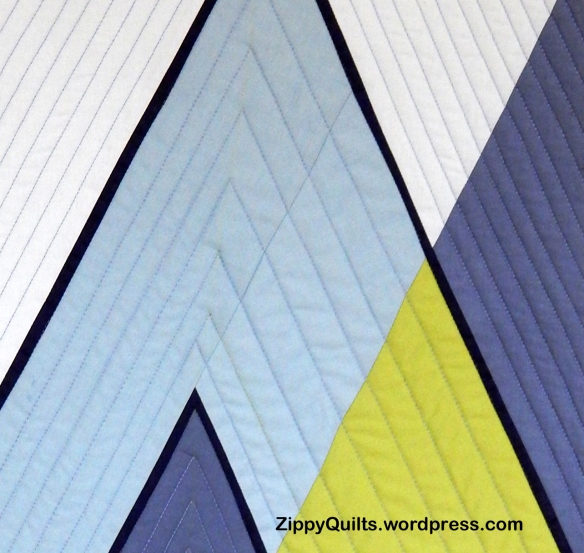I’ve quilted a number of quilts, large and small, on my home machine (Domestic Sewing Machine, DSM) with the variable results that might be expected 😉 I now do mostly small pieces and send the large ones to long arm quilters.
Then last fall I saw this quilt by my friend Diane Ramsay.
In addition to thinking it is a wonderful quilt, I particularly liked the grid pattern of the quilting. So when I needed to quilt fabric for a project recently, I gave it a try.
First I spray basted the fabric really well. It’s small, only about 13 x 18 inches, so it was pretty easy to spray baste. I then marked a line with 1″ painter’s tape and quilted along both edges of the tape. 
The rest of my lines were spaced by simply moving the tape every time. Again, the piece is small, so I only needed one length of tape for all the lengthwise lines. The layers were basted tightly enough that there was minimal shifting, but I did alternate directions as I quilted the lines.
After doing all the lengthwise lines, I put several evenly-spaced lengths of tape crosswise and quilted on both sides of them, moved the tape and quilted some more, etc. I was greatly relieved to see that there was no puckering where the lines of quilting crossed.
The quilting doesn’t show up much on that busy fabric, so here’s a picture of the finished back:
This was very successful, primarily because it was tightly basted, I think. Has anybody else tried this? Any advice?





















